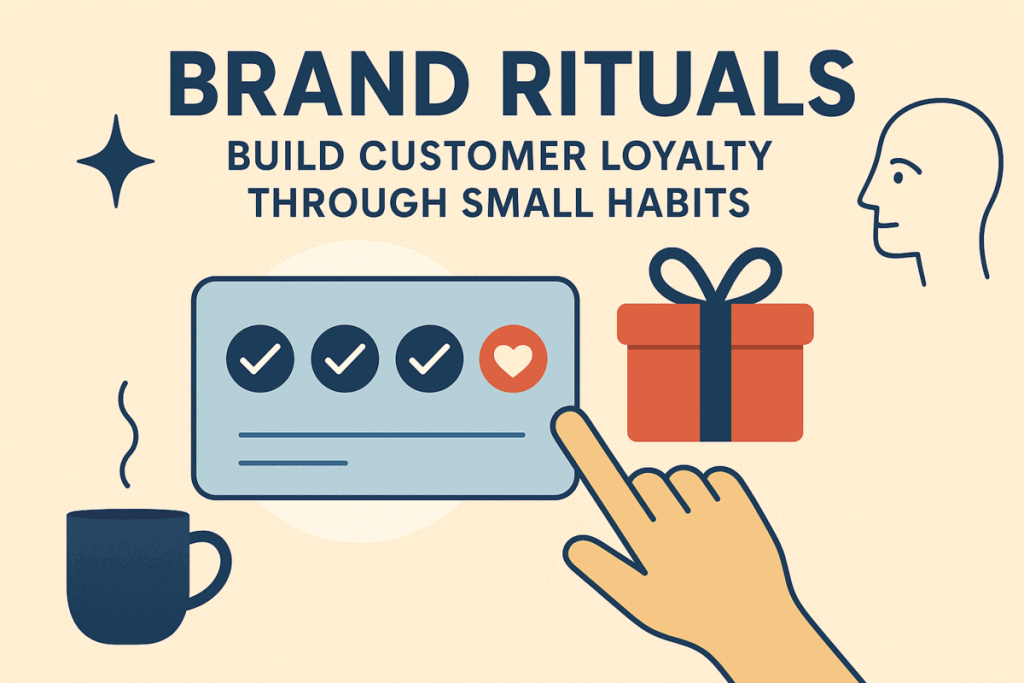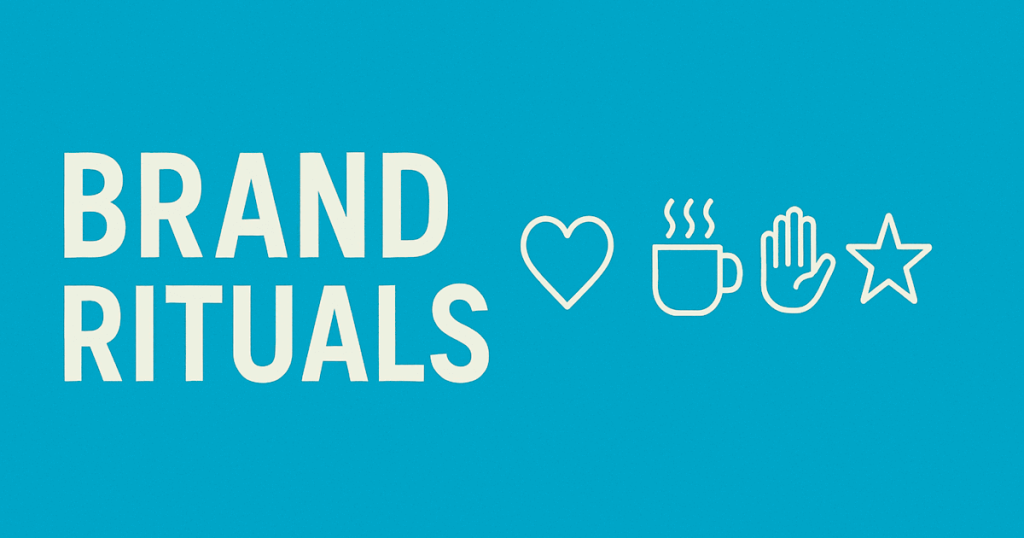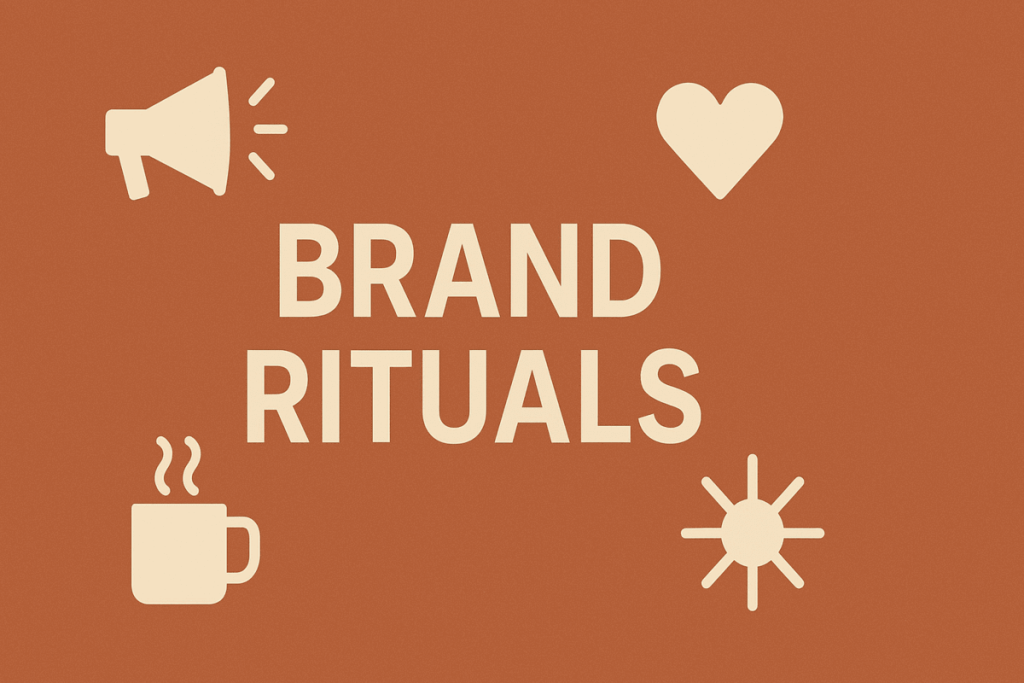Brand Rituals: How Small Habits Can Build Massive Brand Loyalty

The most powerful brand loyalty strategies don’t come from flashy advertising campaigns or expensive promotions. They emerge from something far more subtle yet profound: the small, repeated interactions that gradually weave a brand into the fabric of customers’ daily lives. These brand rituals—predictable, meaningful touchpoints that customers come to expect and cherish—represent one of the most underutilized approaches to building lasting customer relationships.
Consider how Spotify creates anticipation each December with Spotify Wrapped, transforming annual data into a personal celebration that millions eagerly share. Or think about how Starbucks turned ordering coffee into a personalized ritual with name-calling and seasonal cup designs. These aren’t accidents—they’re carefully crafted brand rituals that tap into human psychology and the power of habit formation.
Brand rituals operate on a fundamental truth: humans are creatures of habit who find comfort in predictable, positive experiences. When brands successfully embed themselves into these habitual patterns, they create customer loyalty that transcends price competition and market fluctuations. The result is not just repeat purchases, but a genuine emotional connection that drives long-term brand equity and sustainable business growth.
Understanding the Psychology Behind Brand Rituals

Brand rituals work because they align with how human brains naturally process and remember experiences. Unlike one-time marketing campaigns, rituals create neural pathways through repetition, making brand interactions feel automatic and emotionally satisfying.
Successful brand rituals share three core characteristics. First, they create consistency in customer experience. When customers know what to expect and when to expect it, they develop trust and anticipation. Second, they trigger positive emotions through carefully designed moments of delight, surprise, or connection. Finally, they become personally meaningful by connecting to customers’ values, aspirations, or identity.
The psychological impact extends beyond simple recognition. Brand rituals activate the brain’s reward system, releasing dopamine when customers anticipate and experience familiar brand touchpoints. This neurological response strengthens the emotional bond between customer and brand, making switching to competitors feel like a loss rather than just a change.
Research in behavioral psychology shows that habits formed through positive reinforcement are incredibly resistant to disruption. When brands successfully embed themselves into customers’ routine behaviors, they create what psychologists call “behavioral momentum”—the tendency for established behaviors to continue even when alternatives become available.
Types of Brand Rituals That Drive Customer Engagement
Different types of brand rituals serve various functions in building customer relationships. Understanding these categories helps businesses identify opportunities to create meaningful touchpoints throughout the customer journey.
Onboarding rituals shape first impressions and set expectations for the entire relationship. Companies like Apple excel at this through their signature unboxing experience, which transforms product delivery into a carefully choreographed moment of discovery. The clean packaging, layered reveals, and premium materials create anticipation and reinforce Apple’s positioning as a luxury technology brand.
Usage rituals embed brands into customers’ regular routines and activities. Oreo’s “twist, lick, dunk” ritual transformed cookie consumption into an interactive experience that generations of customers now associate with the brand. Similarly, Kit-Kat’s “have a break” positioning created a ritual around taking pause moments, making their product synonymous with brief respites from daily stress.
Seasonal or temporal rituals create anticipation around specific times or events. McDonald’s McRib campaigns generate excitement through scarcity and timing, turning a simple sandwich into a cultural phenomenon that customers actively await and discuss. Pumpkin spice season demonstrates how brands can tap into seasonal psychology to create predictable excitement.
Community rituals foster connection between customers and shared brand experiences. Harley-Davidson rallies aren’t just motorcycle gatherings—they’re rituals that reinforce identity, community, and brand loyalty among participants. These events create stories and memories that extend far beyond the products themselves.
Building Your Brand’s Ritual Strategy
Creating effective brand rituals requires strategic thinking about customer touchpoints, emotional triggers, and behavioral patterns. The process begins with deep customer research to understand existing habits, unmet needs, and moments when customers interact with your brand or category.
Start by mapping your customer’s journey and identifying potential ritual opportunities. Look for moments of transition, celebration, challenge, or routine where your brand could add meaningful value. The most successful brand rituals often emerge at these emotional inflection points, where customers are already primed for engagement.
Design rituals that align with your brand’s core values and positioning. The ritual should feel authentic to your brand story while serving a genuine customer need. Forced or artificial rituals often fail because customers can sense when experiences aren’t genuinely connected to the brand’s purpose.
Consider the practical elements that make rituals memorable and repeatable. Visual consistency, sensory experiences, and emotional triggers all play important roles in ritual effectiveness. Starbucks succeeds because its ritual combines visual elements (logo, cup design), sensory experiences (coffee aroma, familiar sounds), and emotional satisfaction (personalization, comfort).
Test ritual concepts with small customer groups before full implementation. Gather feedback about emotional impact, practical usability, and genuine desire for repetition. Successful rituals should feel natural and valuable to customers, not forced or marketing-driven.
Measuring the Impact of Brand Rituals on Customer Retention
Effective measurement of brand ritual success requires both quantitative metrics and qualitative insights. Traditional customer retention metrics provide the foundation, but understanding ritual impact demands deeper analysis of behavioral patterns and emotional engagement.
Track participation rates in ritual activities to gauge adoption and enthusiasm. Monitor how often customers engage with ritual touchpoints and whether participation increases over time. Rising participation often indicates that rituals are becoming genuinely habitual rather than novelty-driven.
Customer lifetime value provides crucial insight into ritual effectiveness. Customers who consistently engage with brand rituals typically demonstrate higher spending, longer relationships, and greater resistance to competitor offers. Compare the lifetime value of high-ritual-engagement customers with lower-engagement segments to quantify the impact.
Net Promoter Score and customer satisfaction surveys can reveal emotional impact. Ask specific questions about ritual experiences and their influence on brand perception. Customers who find rituals meaningful often become brand advocates who actively recommend the experience to others.
Social sharing and user-generated content around ritual experiences indicate genuine customer enthusiasm. When customers voluntarily share ritual moments on social media or create their own content around brand rituals, it demonstrates authentic engagement that extends beyond transactional relationships.
Common Mistakes to Avoid When Implementing Brand Rituals

Many brands struggle with ritual implementation because they focus on marketing objectives rather than genuine customer value. The most common mistake is creating rituals that serve brand needs without addressing real customer desires or behaviors.
Forced frequency represents another significant pitfall. Rituals must feel natural and sustainable to customers. Pushing too frequent interaction or making rituals feel like obligations rather than choices can create negative associations that damage rather than build loyalty.
Inconsistent execution undermines ritual effectiveness. Once customers develop expectations around brand rituals, failing to deliver consistently breaks trust and diminishes emotional connection. Successful rituals require operational commitment and quality control to maintain their impact over time.
Over-commercialization can destroy ritual authenticity. When rituals become obvious sales opportunities rather than genuine value creation, customers often reject them as manipulative. The most effective brand rituals prioritize customer experience with business benefits emerging naturally from increased loyalty.
Finally, many brands fail to evolve their rituals appropriately. While consistency is important, rituals need periodic refreshing to maintain relevance and excitement. The key is evolution that preserves core ritual elements while adapting to changing customer needs and preferences.
Turning Small Habits into Lasting Brand Connections
Brand rituals represent a powerful but underutilized approach to customer-centric brand development, building customer loyalty that transcends traditional marketing tactics. By understanding the psychology of habit formation and creating meaningful, repeated touchpoints, brands can embed themselves into customers’ lives in ways that create lasting emotional connections and business value.
The most successful brand rituals share common characteristics: they provide genuine value to customers, align with brand identity, and become naturally integrated into customer routines. Whether through onboarding experiences, usage patterns, seasonal campaigns, or community building, effective rituals transform transactional relationships into emotional partnerships.
Success requires commitment to customer research, authentic value creation, and consistent execution over time. Brands that invest in developing and maintaining meaningful rituals often discover that small, repeated interactions generate far greater loyalty than expensive, one-time campaigns.
As customer acquisition costs continue rising and market competition intensifies, brand rituals offer a sustainable path to differentiation and growth. By focusing on the small habits that make big differences, brands can build the kind of customer relationships that drive long-term success in any market environment.





